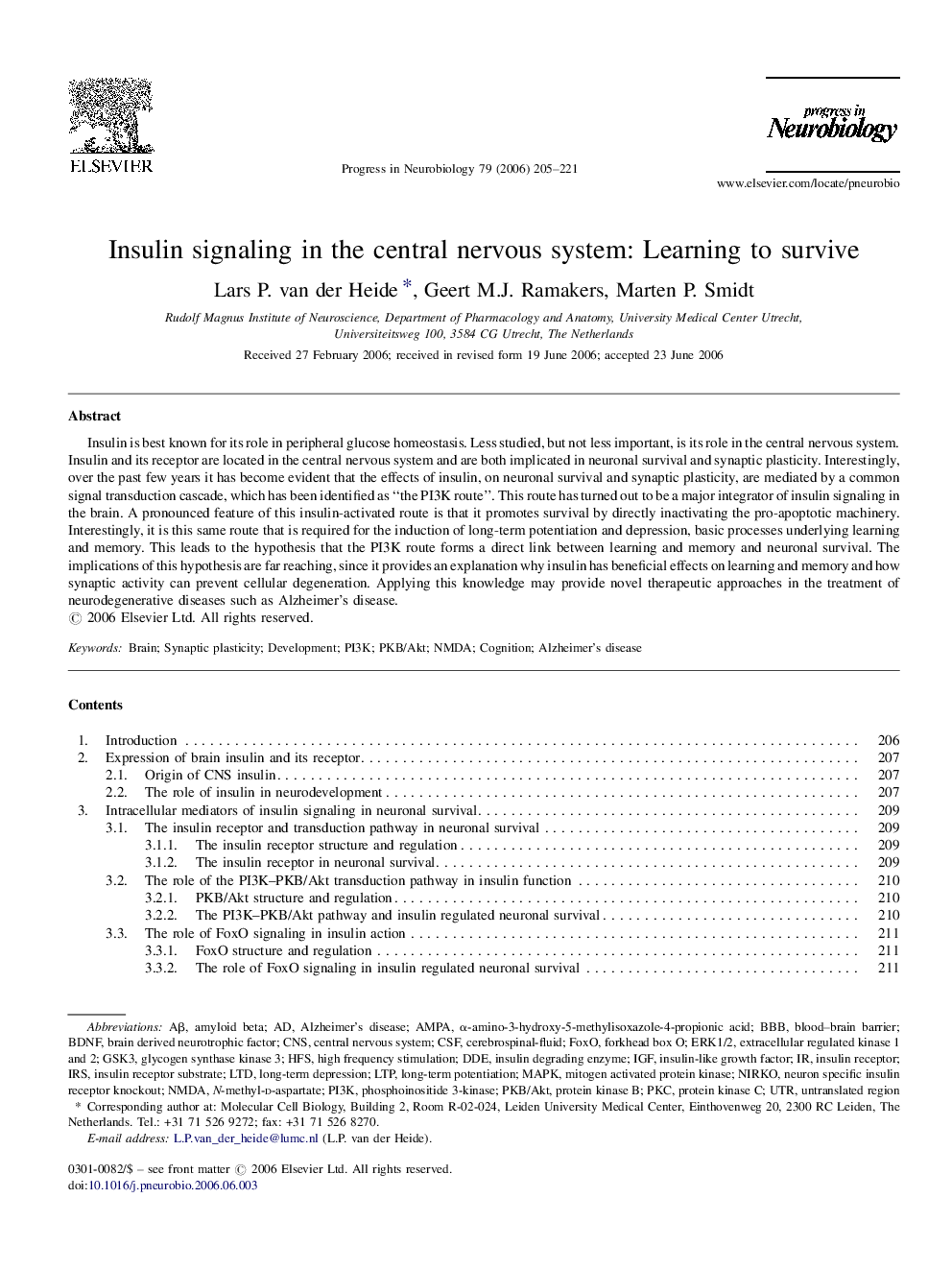| Article ID | Journal | Published Year | Pages | File Type |
|---|---|---|---|---|
| 4353975 | Progress in Neurobiology | 2006 | 17 Pages |
Insulin is best known for its role in peripheral glucose homeostasis. Less studied, but not less important, is its role in the central nervous system. Insulin and its receptor are located in the central nervous system and are both implicated in neuronal survival and synaptic plasticity. Interestingly, over the past few years it has become evident that the effects of insulin, on neuronal survival and synaptic plasticity, are mediated by a common signal transduction cascade, which has been identified as “the PI3K route”. This route has turned out to be a major integrator of insulin signaling in the brain. A pronounced feature of this insulin-activated route is that it promotes survival by directly inactivating the pro-apoptotic machinery. Interestingly, it is this same route that is required for the induction of long-term potentiation and depression, basic processes underlying learning and memory. This leads to the hypothesis that the PI3K route forms a direct link between learning and memory and neuronal survival. The implications of this hypothesis are far reaching, since it provides an explanation why insulin has beneficial effects on learning and memory and how synaptic activity can prevent cellular degeneration. Applying this knowledge may provide novel therapeutic approaches in the treatment of neurodegenerative diseases such as Alzheimer's disease.
